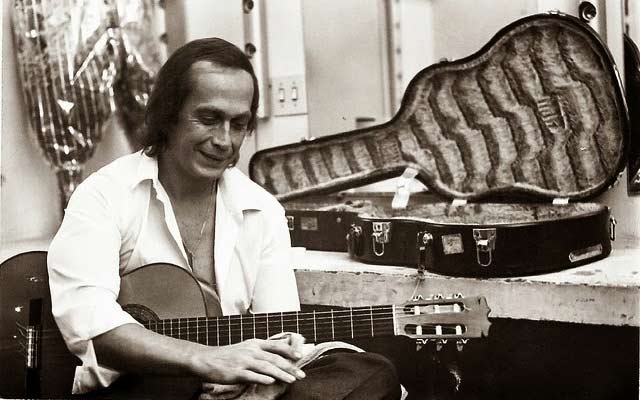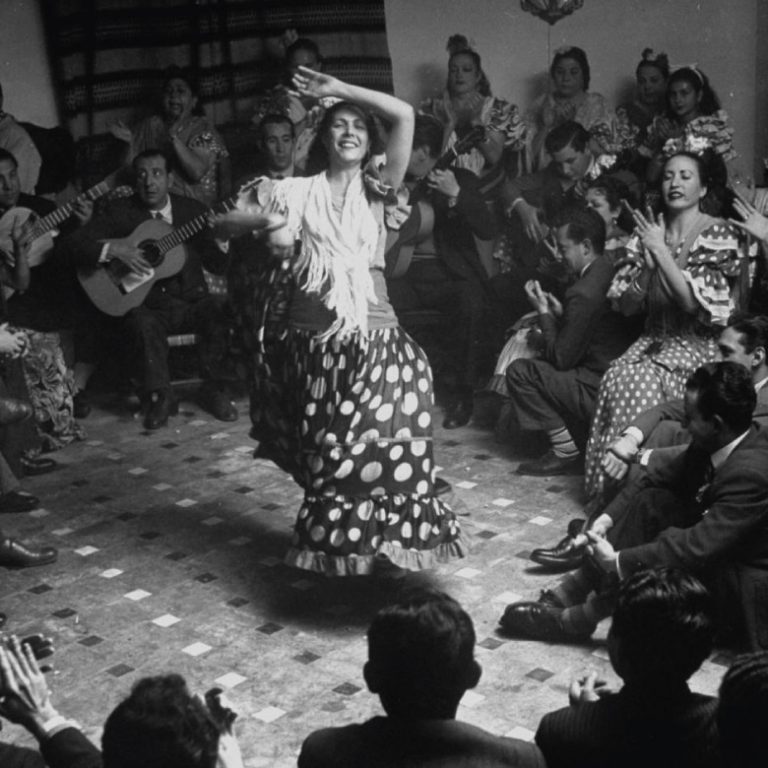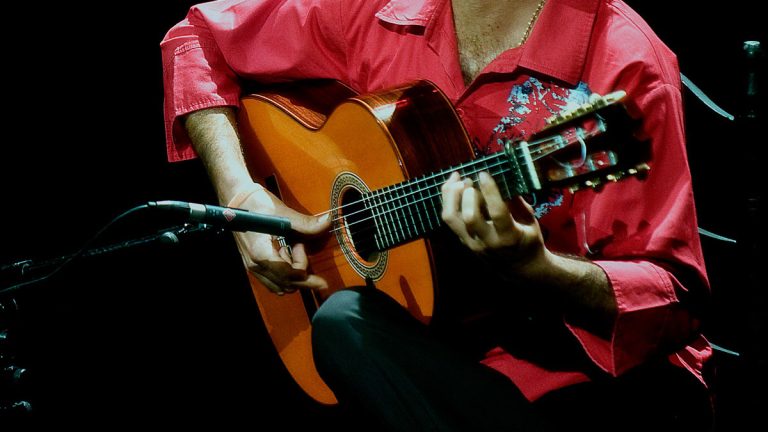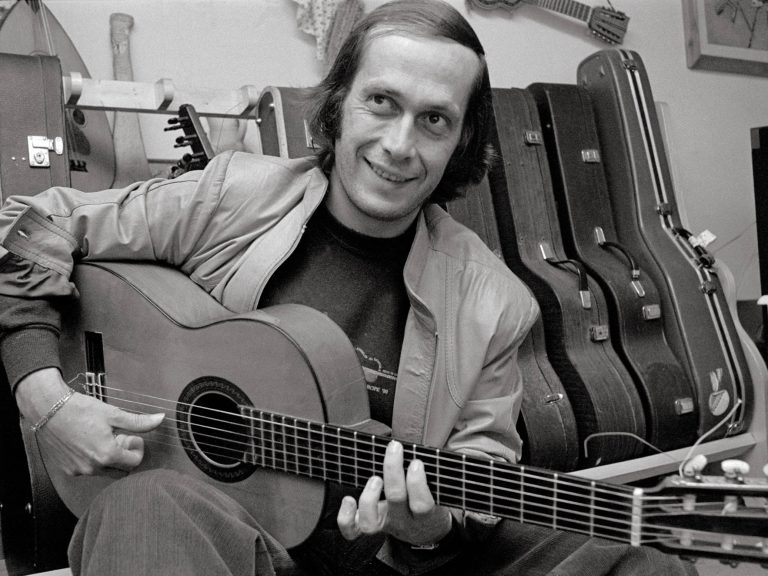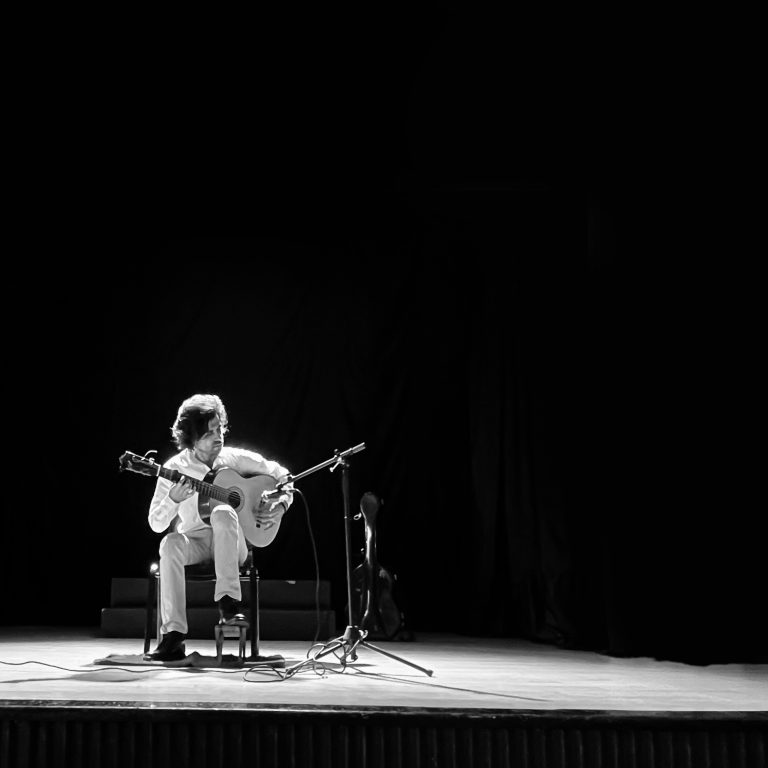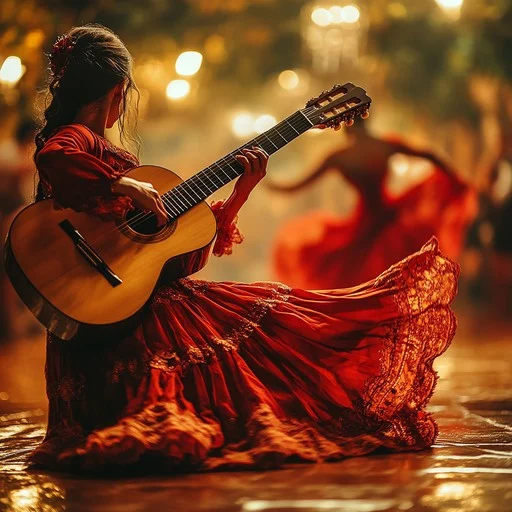How Did Paco de Lucía Achieve Such great techniques? (And How You Can Too)
Paco de Lucía didn’t become the greatest flamenco guitarist of all time by accident—his genius was built on obsessive discipline, intelligent practice, and deep musical intuition. If you want to develop techniques like his lightning-fast picado, powerful alzapúa, and hypnotic tremolo, you’ll need more than just repetition. You’ll need to practice like Paco.
Here’s how he did it—and how you can follow his path.
-
He Practiced Slowly
Paco’s precision came from deliberate, controlled practice—not mindless speed.
His approach:
Played difficult passages at half-speed (or slower) until every note rang clean.
Only increased tempo when he could play flawlessly 10 times in a row.
Your takeaway:
Use a metronome—start at 60 BPM for picado runs.
If you make a mistake, drop the tempo by 5 BPM and rebuild.
-
He Isolated Techniques (Then Combined Them)
Paco didn’t just play entire falsetas over and over—he broke them into micro-exercises.
Example: For his iconic alzapúa, he would:
Drill thumb downstrokes only on open strings.
Add upstrokes (no left hand).
Finally, add melody notes.
Your exercise:
Take a simple alzapúa pattern (like the Entre Dos Aguas riff).
Play just the thumb part for 5 minutes before adding fretted notes.
- He Played with compas (But Also Without One)
Paco’s rhythm was flexible yet precise because he practiced both ways:
With a compas: To lock in compás (12-count bulerías, soleá).
Without a compas: To develop natural groove (critical for aire).
Your drill:
Practice picado scales with a click (strict timing).
Then play the same scales freely, focusing on phrasing.
-
listen More
Spend hours studying singers (cantaores) and dancers (bailaores).
Why? Because flamenco guitar accompanies first, solos second.
Listen to Camarón de la Isla (Paco’s longtime collaborator).
Try to mimic the melodic twists and rhythmic pauses in the singing.
-
Paco Never Stopped Learning
Even at the height of his career!
Studied jazz harmony (listen to his later albums).
Experimented with unusual tunings
Your challenge:
Learn one falseta outside your comfort zone each month.
Transcribe by ear
-
He Played with Relaxation (Not Strength)
Paco’s speed came from supple hands, not tension.
His secret:
Practiced in short bursts (20-30 mins max) to avoid stiffness.
Shook out his hands frequently to stay loose.
Your reminder:
If your hand hurts, stop immediately.
Speed is born from efficiency, not force.
(Sample Routine)
| Technique | Exercise | Duration |
| Picado | A Phrygian scale (i-m) @ 60 BPM | 10 mins |
| Alzapúa | Thumb drills on A string (down-up) | 5 mins |
| Tremolo | P-A-M-I on open B (focus on evenness) | 10 mins |
| Compás | Clap bulerías rhythm (12-count) | 5 mins |
| Listening | Study Fuente y Caudal (no guitar!) | 10 mins |
Final Advice: Be Patient
Your goal isn’t to be Paco—it’s to absorb his discipline. Start today, one note at a time.
Some examples of Body & Posture Exercises for guitarists
-
Shoulder Rolls (Tension Relief)
Roll shoulders backwards 10x, then forwards.
Prevents hunching over guitar.
-
Wrist Flexor Stretch (Avoid Tendonitis)
Extend arm, pull fingers back gently (hold 15 sec).
Critical for fast strumming (rasgueado).
-
Standing Backbend (Open Chest)
Clasp hands behind back, lift slightly → counteracts guitar hunch.
-
Deep Breathing (Performance Stamina)
Inhale 4 sec, hold 4 sec, exhale 6 sec.
Calms nerves, steadies rhythm.
-
Core Stability (For Stage Presence)
Plank 30 sec → strengthens playing posture.
Some Smart Eating & Drinking Habits for Guitarists
To play longer, recover faster, and avoid injuries, your diet matters as much as practice. Here’s how to fuel like a pro:
FOOD HABITS
-
Eat for Finger Dexterity
Omega-3s (salmon, walnuts, flaxseeds) → Reduce joint stiffness.
Magnesium (spinach, almonds, bananas) → Prevents hand cramps.
Protein (eggs, chicken, lentils) → Repairs muscle fatigue.
-
Snack Smart During Practice
Pre-session: Banana + almond butter (slow-release energy).
Mid-session: Dark chocolate (70%+) for focus.
Post-session: Greek yogurt + berries (recovery).
-
Avoid Before Playing
Heavy carbs (pasta, bread) → Sluggish fingers.
Sugary drinks → Energy crashes mid-solo.
☕ DRINKING HABITS
-
Hydrate Like Your Strings Depends on It
1 glass water/hour → Dry hands = bad grip.
Herbal tea (ginger/chamomile) → Calms nerves pre-gig.
-
Performance Boosters
Green tea → Sharpens focus (less jittery than coffee).
Coconut water → Replenishes electrolytes after sweating on stage.
-
Avoid
Alcohol pre-playing → Slows reflexes.
Soda → Sticky fingers = sloppy slides.
PRO TIPS
✅ Warm lemon water mornings → Reduces inflammation.
✅ Turmeric milk post-gig → Soothes muscle strain.
✅ Meal timing: Eat 1.5 hrs before playing (no food coma!).
Finally:
Few artists have transformed their genre as profoundly as Paco de Lucía (1947–2014), the Spanish virtuoso who elevated flamenco guitar to unprecedented heights. Born Francisco Sánchez Gómez in Algeciras, Andalusia, he was nicknamed “Paco de Lucía” after his mother, Lucía Gómez, to distinguish him from countless other “Pacos” in flamenco circles. His journey—from a child prodigy playing in beachside bars to a global icon—redefined flamenco’s boundaries and inspired generations of musicians.
The Making of a Legend
Paco was born into flamenco. His father, a guitarist, and his brothers, Ramón de Algeciras and Pepe de Lucía (a renowned singer), immersed him in the art form from age 5. By 11, he dropped out of school to focus on guitar, practicing up to 12 hours a day. His early influences included Niño Ricardo and Sabicas, but he soon developed a style all his own—blistering speed, harmonic sophistication, and a raw emotional depth that made even traditional forms sound revolutionary.
Breaking Boundaries
Paco shattered flamenco’s conventions by:
Fusing genres: Collaborating with jazz legends like John McLaughlin and Chick Corea (notably in the trio The Guitar Trio).
Modernizing techniques: Pioneering the use of picado (alternate picking) at unmatched speeds and incorporating classical scales into falsetas.
Globalizing flamenco: His 1973 album Entre Dos Aguas (featuring the hit rumba “Entre Dos Aguas”) brought flamenco to mainstream audiences worldwide.
Iconic Works & Legacy
Almoraima (1976): A masterpiece showcasing his harmonic innovations and mastery of bulerías and soleá.
Collaborations with Camarón: His partnership with flamenco’s greatest singer, Camarón de la Isla, produced classics like La Leyenda del Tiempo.
“Friday Night in San Francisco” (1981): His live album with McLaughlin and Al Di Meola remains the best-selling acoustic guitar album ever.
The Paco Effect
Paco didn’t just play flamenco—he reimagined it. His technical prowess (like his lightning-fast picado and thumb-under tremolo) set new standards, while his emotional phrasing made even non-flamenco listeners weep. He proved flamenco could be both traditional and avant-garde, inspiring artists like Vicente Amigo.
A Humble Genius
Final Thought: Paco de Lucía taught the world that flamenco isn’t just music—it’s a language of fire, sorrow, and freedom.

